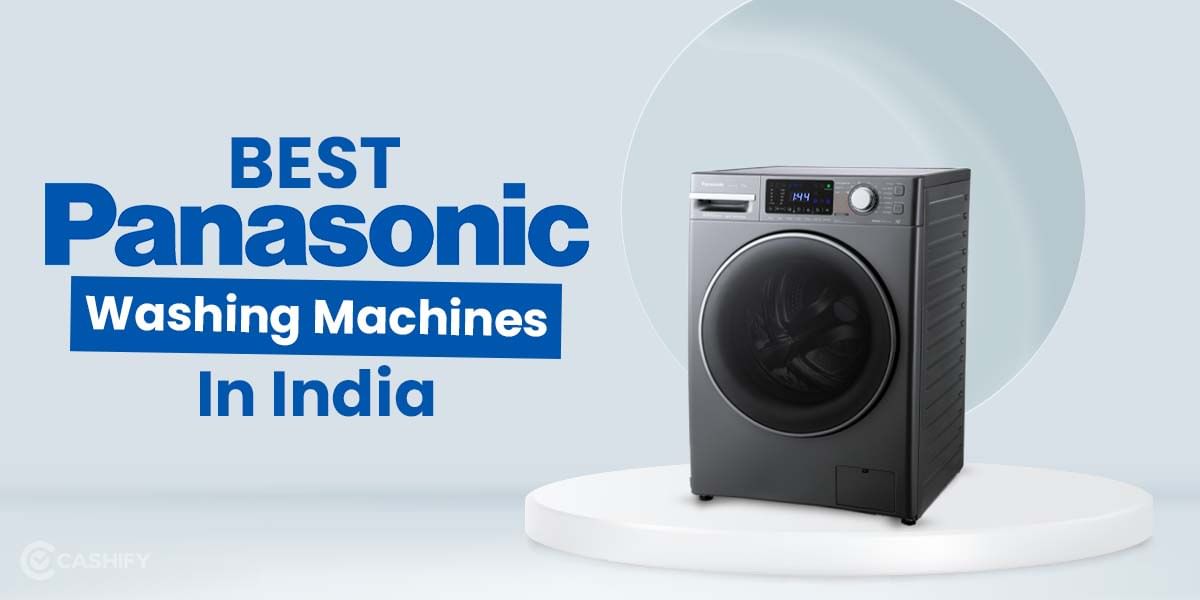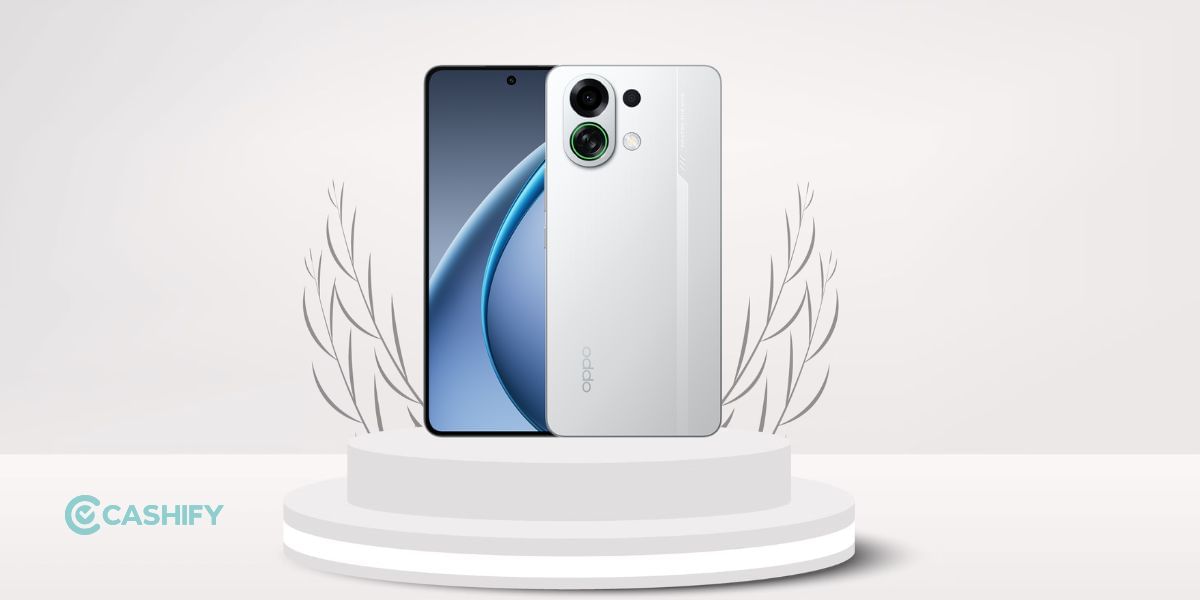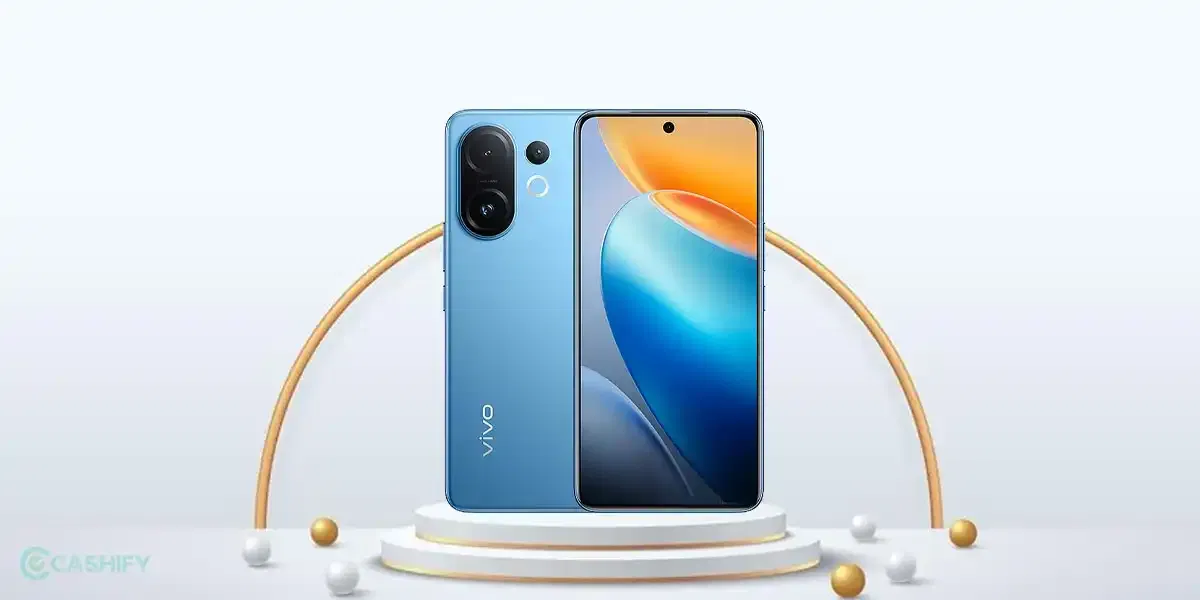Introduction
Moto smartphones have prospered a lot ever since the first-ever Moto was launched back in 2013. In fact, the G8 Plus is an astounding brilliant smartphone with a few ups and downs included in its specs sheet. Starting with the brightly lit display, the device features a stereo speaker and comes pre-loaded with a slightly customized near-stock Android Pie 9 although an Android 10 out-of-the-box was expected but that’s something it will get pretty soon.
The phone does have a silver lining including a certain degree of splash resistance to excellent but not the best camera setup especially when the ultrawide sensor is limited to taking videos only. Then again, the device tunes to an excellent battery life on-board thanks to a larger battery than Motorola G7 Plus. Moto G8 Plus surely has a beefy specs sheet under the hood thanks to the upgrade to Snapdragon 665 SoC that can handle multi-tasking and more with ease.
It might not be an easy task just to decide if you want to buy the phone reading just the specs sheet. That’s why we did an in-depth review on Moto G8 Plus that will guide you through both ups and downs of the phone including whether or not you should buy it or not so here’s everything you need to know.
Prices, Variants, Availability
Moto G8 Plus is available in just one trim i.e. 4GB+64GB and it is available in Cosmic Blue and Crystal Pink color variants. The device is available on TataCliq, and Flipkart apart from the retail channels. The price although varies since the phone is available at the cheapest on Flipkart at just Rs 12,999/- after a Rs 3,000/- discount along with an exchange offer with discounts up to Rs 11,700/-.
On TataCLiQ, the phone is available at Rs 13,999 along with EMI options and COD. The phone is also listed on Amazon India at Rs 12,999/-
To have a better vision about which smartphone to go for in a specific budget, head to the Cashify Smartphone Review section and choose the best for yourself.
Box Contents
There’s no rocket science when it comes to the box the Moto G8 Plus arrives in which is basically a black retail box. It contains the handset (of course) along with a snuggly befitting TPU silicone case, a 15W Turbo Charger, a USB Type-C Cable, and a quickstart manual and a SIM Card ejector tool on-board so that’s pretty much the same as you would find on any Moto smartphone. There are no earphones though which means you will have to stick to your Bluetooth or 3.5mm headphone.
- The handset
- TPU Case
- 15W Turbo Charger
- SIM Card ejector tool
- Quickstart manual
Specs at a glance
Talking about the key on-paper specifications of the Moto G8 Plus a, here is what the device packs:
- Display: 6.3-inch IPS LCD panel, 1080 x 2280 pixels, 400 PPI
- Processor and GPU: Snapdragon 665, Adreno 610 GPU
- RAM & ROM: 4GB, 64GB
- Software: Android 9.0
- Rear cameras: Triple (48MP + 16MP + 5MP)
- Selfie sensor: 25MP
- Battery: 4000mAh capacity
- Weight: 188g
- Dimensions: 165.3 x 76.6 x 8.8 mm
Design & Build
We were a bit confused with Moto G8 Plus back panel as it resembles that of Moto One Macro and in fact, the overall design is pretty much the same except the fact that instead of having a dedicated Macro camera on top, G8 Plus comes with a 16MP ultra-wide Action video camera.
Moving ahead, the front looks polished with thin bezels, chin and the top have been minimized, although the former is just a tad bit thicker. There’s a waterdrop notch on top, an earpiece just tangling around the edge of the front panel and that’s pretty much it. The phone is 9.09mm in thickness and it is just 158.4mm tall so that’s pretty easy to hold. The front is glass while the rear is polycarbonate with plastic frame.
Talking about the sides, it is glossy and feels really premium to hold as a whole. There are a 3.5mm headphone and a secondary mic on top along with volume rockers and power button on the right. The placement of the power buttons makes it reachable while the rockers are pretty high. You’ll find a Dual SIM Card slot on the left and finally, a USB Type-C port, a speaker grille, and a primary microphone make way onto the bottom of the phone.

We found the back panel to resemble much of its Moto One Macro where the back panel isn’t glass but has a glossy finish to it that makes it appear glass-like. It comes in two colour variants i.e. Cosmic Blue and Crystal Pink both of which look classy on this handset. In fact, we have been a fan of how the G-series from Moto is progressing in terms of design compared to the previous models like G5, G6, G7 that looks the same in most cases.
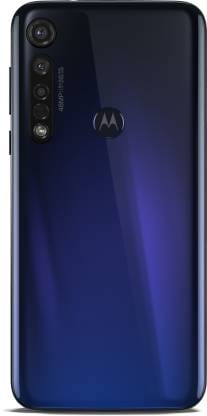
About the rear cameras, there’s a standout ultrawide Action Camera as Motorola calls it on top and protrudes just a bit from the back panel. Then there is a vertically stacked camera bump that has the primary and the depth sensor along with a Laser Autofocus and LED flash. Just next to the Laser AF, you’ll find a Moto logo and there’s nothing else on the back now. It is common to wonder where the fingerprint scanner is since it is not on the sides, neither under the display or there’s no optical FPS on the front. Interestingly, it is camouflaged in a Moto logo we wrote about here. Although this isn’t something new, we just found it interesting and so will some of those who haven’t come across any Moto smartphone yet.
Display
Motorola G8 Plus features an even larger display than G7 Plus at 6.3-inch LCD panel boasting a screen resolution of FHD+ or 2280×1080 pixels. The display is bright at 581 nits in auto-brightness mode while it can go as high as 477 nits when manually adjusting the bar which is just okay but not good enough as LCD panels tend to go higher in terms of brightness. Since the phone is around the soft spot w.r.t. to the screen size according to me (no too big nor small), we found it to be an amazing companion of viewing content either on the internet or offline. The waterdrop notch is U-shaped and doesn’t take much of the screen real estate, unlike a usual iPhone X-like notch. The screen is by default tuned to a cooler colour spectrum although there are settings to choose from – saturated, booster, and natural.
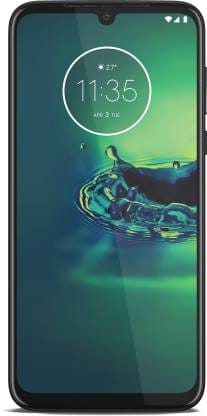
With Moto G8 Plus Peek Display and Attentive Display (explained later on), you are in full control of the notifications even when the phone is locked. It is great for viewing thanks to the brighter whites and near zeroing blacks and it is overall good for gaming and moving, etc, but we won’t compare it with FHD+ AMOLED panel also available at this price tag. But that nowhere means the display is bad in any way, it shows punchy colours and viewing angles are far better now.
Performance
Under the hood, Moto G8 Plus does have adrenaline-boosting Qualcomm Snapdragon 665 made on the 11nm manufacturing process. The octa-core SoC binds together four high-powered 2.0GHz Kryo 260 Gold processors along with four low-powered 1.8GHz Kryo 260 Silver along with a high-end Adreno 610. Together, the CPU & GPU is able to perform a lot more than usual.
To be honest, the phone is everything but not made for extensive & intensive gaming. While we were using it, the UI is super clean and it takes you wherever you want without showing any heavy customizations. The multitasking on Moto G8 Plus is buttery as well although if you are switching between two or more heavy apps, it might lag just a tad bit and it is something you might not even gauge.
The processor is competent to handle almost any task you throw at it so even if you open PUBG Mobile and set it on High settings, it would crash but at least you can play the game for some time before noticing any frame drop or heating issues. As per the benchmarking scores are concerned, the phone was able to pull of 170,004 points on AnTuTu which is decent and the same goes for the GFXbench T-Rex test where it returned a score of 34fps.
As said, as the intensity of the game escalates, the frame drop is likely to occur which doesn’t take a toll on the processor and rather simply decreases the frame rate to make things go easy on it. If you are playing any game in their Low settings, you can have a smooth gaming experience but the phone isn’t made for hardcore intense gaming sessions.
Software
Similar to Moto One Macro, G8 Plus isn’t in the Android One program but comes preloaded with a lot of features. First of all, it runs on Android 9 Pie which is a stock version with a few add-ons by Motorola. Now, this makes Moto smartphones completely different from custom UIs you would find on phones like Xiaomi or Realme as these phones are bloated with a heavy UI and bloatware where the UI on Moto G8 Plus is pretty light.
Having a stock Android version helps users relate if you are upgrading from an Android phone while those from custom UI-mounted smartphones will find it pretty stripped with features but that’s just perception and could be different.
Talking about Moto G8 Plus UI, it is pretty smooth, easy to use, and responsive. The app drawer is pretty basic with circular icons. The home screen itself is clutter-free with two rows of quick icons to go for and yes, you can add shortcuts to apps if you want. The notification is as smooth as it can be and don’t worry, the system doesn’t annoy users with unwanted notifications which are sometimes we have seen aggressively increase when you upgrade to Android 10 on non-Moto smartphones.
There is a Moto Actions feature as well that allows users to set up actions to recall any particular app or do any function such as taking photos or turn on the torch and so on. There is a dedicated setting for Moto Actions that we found to be really handy, especially when you are in dark and need a quick option to turn on the torch rather than unlocking the phone and dragging the notification panel to turn on the flash. You will find the traditional three-button navigation strapped onto the device as well as the One Button Navigation.
There’s a Peek Display which basically is a feature that showcases notifications & interactions right on the lock screen while an Attentive Display will keep the phone’s screen active until you are using it.
Cameras
Talking exclusively about the camera specifications, Moto G8 Plus has a more than average camera setup consisting of a single front sensor and a triple rear camera setup. The device packs in a 25MP front sensor which has an aperture of f/2.2 and pixel size of 0.9micron. Moving on to the rear camera setup, it’s primary cam is 48MP and comes with Laser AF, PDAF, 0.8micron pixel size and 1/2.0” sensor size and an aperture of f/1.7.
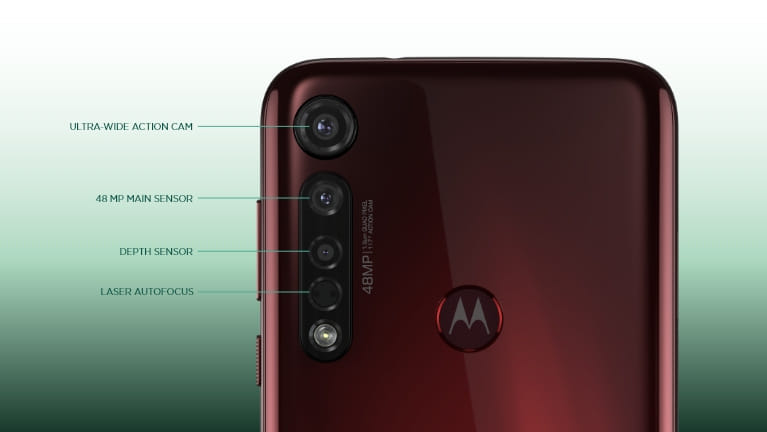
The primary sensor is flanked with a secondary 16MP ultra-wide-angle video camera with 14mm focal length and f/2.2 aperture and finally, the tertiary cam is a 5MP dedicated depth sensor with an aperture of f/2.2, a pixel size of 1/12micron, and a sensor size of 1/5.0”. That’s the whole rear camera setup. Here’s what these sensors are when you use it in real life.
The camera app is pretty powerful as it brings all the features the phone has on-board so standard mode, portrait, ultrawide action cam, and others. There is a tonne of modes that you can access via the camera app including Cutout, Spot Colour, Night Vision, and Panorama, etc.
Speaking about the USP of the device aka the 16MP dedicated ultrawide Action cam that can shoot GoPro-style videos i.e. you can shoot landscape-styled videos while holding the phone in portrait mode. It uses the same quad-pixel technology as the primary sensor which allows it to take excellent photos in both daylight and low-light conditions. The only thing that bug here is that the phone doesn’t allow you to take photos using the ultrawide sensor.
Moving on to the primary sensor, it is a 48MP sensor that uses the same quad-pixel technology which is capable of taking pretty sweet photos at 12MP. It can shoot videos at FHD at 120fps and 4K videos at 30fps although the 1080p videos on both primary rear and selfie cameras are electronically stabilized.
The primary sensor can capture photos where the colours pop-up and has a higher gradient of a sharpness although the images are grainy at nighttime. The photos are well-lit, the subject in the foreground is detailed where the bokeh effect or portrait effect kicks in thanks to the 5Mp depth sensor and laser AF that allow better stability.
The dynamic range is decent which couldn’t be altered with a software patch so you are stuck with this camera setup. The selfie snapper takes average photos both in portrait and non-portrait mode although the output is a bit over-exposed. The Beauty Mode mounted on Moto G8 Plus smoothens the skin texture in the results. We didn’t see much difference between the 25MP selfie snapper and 6MP after 4-in-1 pixel binning technology kicks in. There are few other modes in front snapper such as Portrait, Group Portrait, Spot Color, slow-motion, etc.
Battery
What’s crucial is that the phone has a 4,000 mAh battery on-board which is 1,000 mAh larger than G7 Plus which sports a 3,000 mAh cell under the hood. Of course, it is not just the battery but the underlying processor that makes Moto G8 Plus a powerhouse with excellent battery life.
Motorola supplies a 15W Turbo Charger which is ground-breaking since Moto G7 Plus limits itself to 10W Turbo Charge. A full charge from 0% to 100% requires almost 2 hours or 2:06 hours precisely. If you are in a hurry, plug it in for half an hour and voila, the phone is almost 35% charge which isn’t that good but considering the fact that this phone is much cheaper than the midrange or flagship devices that come with faster-charging speed so that’s a win-win situation here.
With a large battery size, we were able to stretch battery life to more than a day if not less. The phone did lose some of its battery in the night when it was idle but then too, the battery managed to sneak into day two even after we used it for social media, games, web browsing and video streaming and more the previous day. With light usage, one can expect it to last more than one and a half days although that depends on various factors.
Audio & Biometrics
Moto G8 Plus sports a stereo speaker which is a USP for a phone no doubt. The primary speaker is the bottom-firing one while the earpiece acts as a secondary speaker. Stereo separation is on-point as the speakers are able to differentiate between mid and high frequency for the earpiece and mids, highs, and lows for the loudspeaker. Overall, the speaker audio quality comes with an overall category of Excellent. The Dolby Audio does enhance the sound quality for both bottom-firing speakers and earphones.
Motorola Moto G8 Plus offers triple unlocking mechanisms of which, two are based on biometric. The first is the traditional put PIN or pattern to unlock, next is the face unlock, and the third is the fingerprint scanner. Face Unlock turned out to be an awesome feature as it unlocks the phone quickly although it lacks any 3D scanning technology. The next is the rear-mounted fingerprint scanner which is zippy and reliable more so that you would find it more convenient than using a face unlock.
Pros & Cons
Pros:
- Value for money
- Good battery life
- Stock Android
Cons:
- Similar design
- Ultra-wide camera can be used for shooting videos only.
Design-wise, the phone is similar to Moto One Macro and we are totally impressed with both of its glittering color variants. Moto G8 Plus does have both lows and highs such as having some degree of water resistance is something that puts money in Moto’s bank for sure. The phone has a simple & clean Android UI and an excellent battery life to use the phone for hours without needing to charge it again at least in a day’s time.
Motorola did make some changes to the phone to cut down costs such as there is only one RAM model, the camera isn’t fully optimized and moved. In fact, the ultra-wide sensor on the phone which is essentially one of its USP can only record videos and not photos.
Overall, the processor isn’t that powerful, the screen resolution or the display isn’t on point with what most people would’ve wanted i.e. an AMOLED panel, and other things that drag down G8 Plus from its competitors. The phone does justify its prices except for a few specifications that might disappoint some people.










